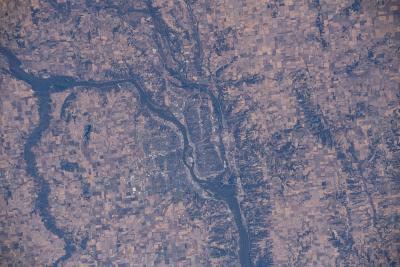A New Population Downscaling Method Based on U.S. Property Data
Population data is generally aggregated at census enumeration units and is an important input for many research fields, including urban planning, disaster prevention, and environmental modeling. Many population-dependent studies require effective methods for downscaling population data to finer spatial units. However, there is currently no broad optimal population downscaling method. This study performs population downscaling based on a novel settlement-related property dataset, Built-Up Property Records (BUPR) from the Historical Settlement Data Compilation for the United States. The new method generally outperforms all other traditional methods.
Using a new method, this study achieves population downscaling with a higher accuracy than traditionally used methods (e.g., land cover- or road network-based method). The BUPR dataset provides property records information for most of the contiguous United States for every five years spanning from 1810 to 2015. This means that the proposed method can be applied to most of the United States and generate population downscaling for the entire time period where census population data are available.
In this study, researchers assessed the accuracy of population downscaling based on BUPR, a novel settlement-related dataset. They compared the performance of BUPR-based population downscaling with other more traditional downscaling techniques (e.g., land cover-, road network-, nighttime light-based method, etc.). At the state-level, the BUPR-based population downscaling outperforms other techniques in low population density regions (Oregon), medium population density regions (South Carolina), and high population density regions (Connecticut). It is inferior to other methods only in New Mexico, where the BUPR dataset is largely incomplete. While this effort focuses on population downscaling at the block group level, the method could also be applied at different targeted spatial levels (e.g., block, 250-m grid, county, etc.) based on future study needs. The BUPR dataset covers most of the contiguous United States at a temporal resolution of 5 years spanning from 1810 to 2015. Thus, BUPR-based population downscaling can be applied to most of the United States for population downscaling for an over 100-year long period.

